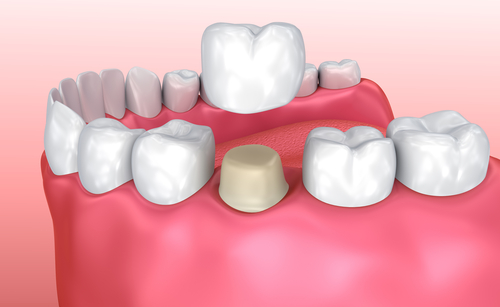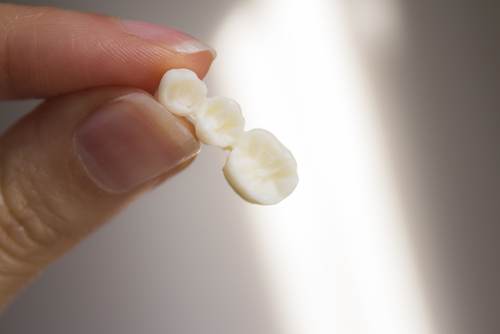- Home/
- Our Services/
- Crowns and Bridges
CROWNS AND BRIDGES
If you’re feeling down about your chipped or damaged teeth, ToothKind can repair and restore your smile in no time. At ToothKind, we understand that an unsightly or damaged tooth can have a negative impact on your self-confidence. A crown or bridge may be the solution if your teeth are cracked, damaged or badly decayed. Toothkind offers the latest digital CAD/CAM technology to create beautiful, long lasting crowns while you wait. This often means no more temporary crowns as the whole procedure can be completed in one visit. Your Toothkind dentist can discuss the best options for you.
The benefits of crowns and bridges
Crowns are designed to increase the strength and stability of the tooth. Providing various benefits for patients, crowns can assist the function and aesthetics of your teeth and are a safe and effective repair method. Crowns may also be beneficial to restore the following dental conditions:
- Excessive grinding of teeth or an improper bite
- An excessively large filling
- Ageing teeth
- After a Root Canal Treatment
A bridge allows the dentist to replace lost teeth with new artificial teeth, without the use of a dental implant or denture. Basically a false tooth is attached to the tooth next to it to hold it in place.
Dental crowns
As the name suggests, a crown is a cap or covering for a tooth. It is used when your tooth is discoloured, cracked or broken, heavily filled or if fillings have been lost. There are several types of dental crowns available so your ToothKind dentist will advise the best option depending on the location of the crown. They may recommend ceramic, resin or sometimes even gold crowns.
Our dentists use their expertise and modern technology to precisely match the new crown to the shape and colour of your existing teeth. Some of our dentists offer same day crowns using CAD/CAM technology to design, produce and insert ceramic restorations all in one single appointment.


When would I need a crown?
Your dentist may consider the use of a crown in the following situations:
Replacement of a large filling
If your teeth are heavily filled, they may be at risk of fractures. Frequent replacement of fillings can lead to loss of precious tooth structure. Repeated dental treatment on the same tooth may lead to deepening of the filling and subsequent nerve inflammation. To avoid these complications, your dentist may recommend that a crown is constructed before the filling becomes too large and remaining tooth structure is too short to support a crown.
To stop a tooth from further cracking or fracturing
If your tooth is showing fine lines and cracks or you occasionally feel sensitivity when biting into sticky or hard foods, your tooth may have a deep crack or may be at risk of complete fracture. This is common for heavily filled teeth, especially where an amalgam filling is in place. Your dentist may recommend a crown to restore the tooth and protect its cusps from splitting apart and may suggest replacing any amalgam with a ceramic restoration.
To anchor a bridge replacing a missing tooth
If a tooth is missing or lost, your dentist will discuss the options for tooth replacement. This may involve the placement of an implant or tooth supported bridge. If two or more teeth directly adjacent to the lost or missing tooth are at risk of fracture or are discoloured and need crowns, a bridge may be a good option to replace the missing tooth. When the bridge is produced, a porcelain tooth (pontic) is fused to the two or more crowns on either side and once the crowns are fitted onto the adjoining teeth, the porcelain pontic appears to be emerging out of the gum. A bridge may be a suitable course of treatment for you if you are unable to have an implant due to issues with your overall health or dental health.
After root canal treatment
Root canal filled teeth are prone to fractures, due to the nature of root canal treatment and hollowing out of the tooth in the process. Dentists highly recommend crowning root canal filled teeth to protect them from fractures and further bacterial infections.


